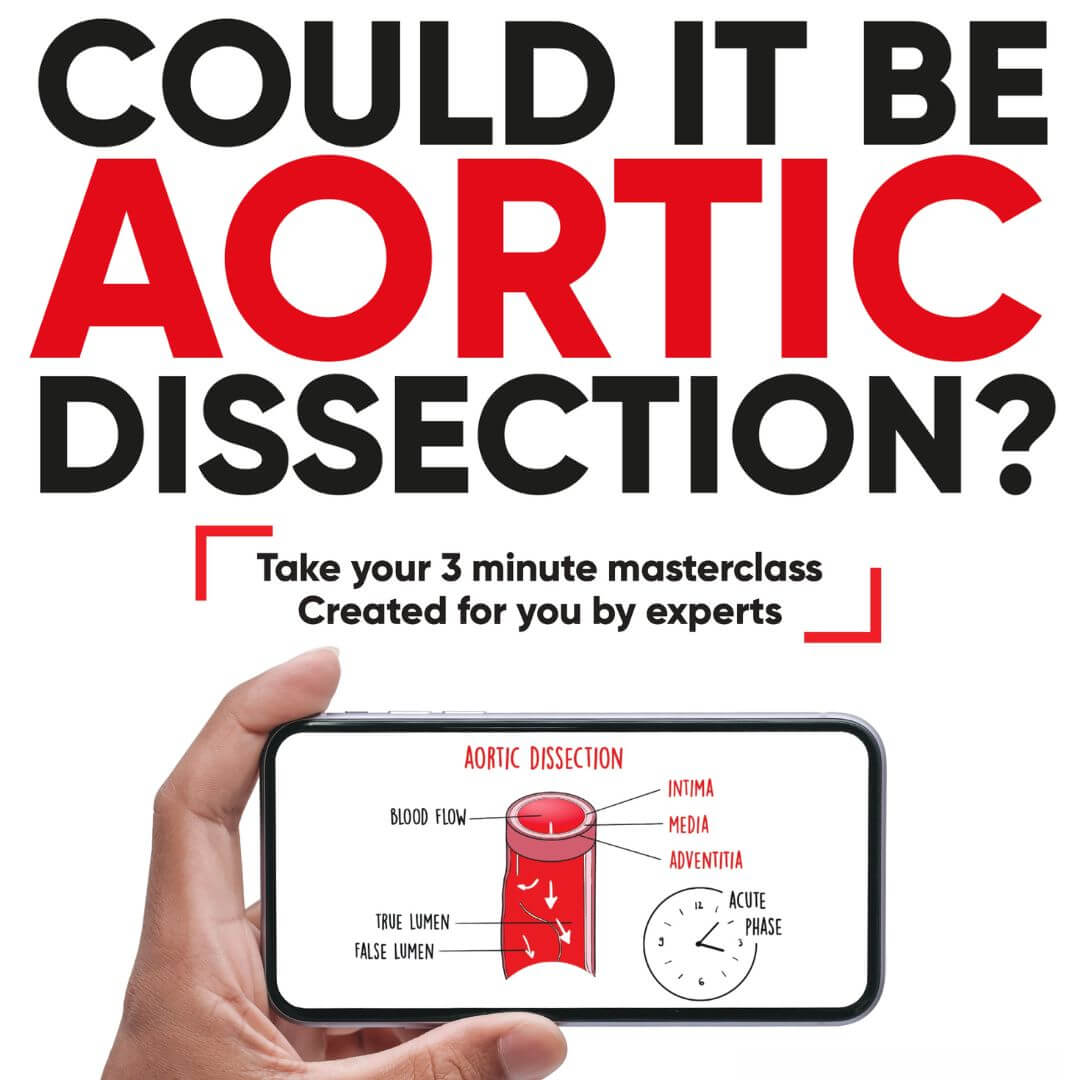Acute Type A aortic dissection is one of the most urgent and life-threatening medical emergencies. It demands precise and timely diagnosis, rapid transfer to a specialist centre, and immediate surgical intervention. However, a recent national audit published by the Association for Cardiothoracic Anaesthesia and Critical Care (ACTACC) has revealed alarming systemic shortcomings in the UK’s management of this condition.
The accompanying editorial by the charity offers an essential perspective: beyond statistics and clinical pathways, the focus must shift to centring the lived experiences of patients and families to drive meaningful change. The charity is at the forefront of advocating for system-wide reforms, using real-life stories to highlight the urgent need for improvement in the diagnosis, transfer, and care of acute aortic dissection patients. Our work bridges the gap between data and human impact, ensuring that every voice contributes to shaping a safer future for those affected by this life-threatening condition.
A Deadly Gap in Care
Despite its urgency, the ACTACC audit revealed a system struggling to provide the swift and coordinated care that patients with acute Type A aortic dissection desperately need:
- Delays in Diagnosis: Nearly 16% of patients were initially misdiagnosed, often with more common conditions such as acute coronary syndrome or gastritis.
- Prolonged Transfer Times: On average, it took 12 hours from a patient’s emergency department arrival to surgery. Some delays arose from logistical challenges such as ambulance shortages or inadequate communication between hospitals.
- Insufficient Monitoring During Transfers: A majority of patients (85%) were transferred without medical escorts, often lacking critical blood pressure control or appropriate monitoring.
- Preventable Harm: The audit reported cases where anticoagulants were inappropriately prescribed, worsening the risks of surgery.
These systemic failures cost lives. Behind every delay or misstep lies a family irrevocably changed by loss.
From Thinking to Action
While education and awareness poster may have made strides in raising awareness, the charity highlights the need for a broader, systemic approach to improve diagnosis. Addressing the diagnostic and treatment challenges requires more than asking clinicians to “Think.” Instead, we must design out reliance on human vigilance by building systems that are foolproof, patient-centred, and efficient.
1. Improving Diagnosis
Diagnosing aortic dissection can be deceptively complex. Although many patients report classic symptoms like severe chest or back pain, others present with symptoms that mimic less critical conditions. Increasing clinician awareness of the diverse ways AD manifests is vital, but education alone is insufficient.
The development of clinical decision tools alone or maybe augmented by artificial intelligence shows promise and system-wide changes, such as those at Hull Royal Infirmary, have demonstrated improvement:
- Streamlining Diagnostic Pathways: By implementing a quality improvement bundle, Hull reduced the time to CT scanning by over an hour and achieved a 100% detection rate.
- Promoting Psychological Safety: Emphasising a “just culture” helps eliminate fear of blame, encouraging clinicians to seek second opinions or perform CT scans even in ambiguous cases.
- Actionable Strategies: Hospitals must incorporate strategies like triage nurse training, multidisciplinary team input, and data-driven improvements to reduce diagnostic delays.
2. Ensuring Safer Transfers
The journey from initial diagnosis to surgical intervention is fraught with danger. The NHS England acute aortic dissection toolkit, developed in collaboration with TADCT, provides seven key principles to standardise care, including:
- Critical Care Transfers: Patients should be accompanied by skilled teams capable of monitoring and managing complications during transit.
- Regional Governance: Clear communication protocols between referral and specialist centres can reduce delays caused by miscommunication or capacity issues.

Edward’s Story: A Life Saved by Prompt Intervention
Edward, a fit and active man in his 40s, began his Monday morning like any other, heading to the gym for a workout. While performing leg weight exercises, he suddenly experienced symptoms that felt like a heart attack. Recognising the urgency, those around him called an ambulance, and Edward was quickly transferred to the hospital.
Once there, doctors identified the true cause of his symptoms: an acute type A aortic dissection. Fortunately, Edward was in a hospital with a specialist aortic team who could provide the life-saving surgery he needed. The team performed an emergency repair, replacing his aortic valve, root, and ascending aorta. Although Edward was conscious before the procedure, he remembered little of the events leading up to the operation. When he woke up, the surgery had been a success.
The operation marked the beginning of Edward’s journey to recovery. Over the next two years, he underwent consistent monitoring of his aortic valve and overall heart health. While he experienced a stroke during his recovery, Edward made significant progress and returned to living a healthy, active life. Physically and mentally, he felt strong and capable, dedicating himself to maintaining a lifestyle that supported his long-term health.
A routine CT scan, however, recently revealed complications that required further surgery. This news came as a disappointment, especially as Edward had worked so diligently to stay healthy. Unlike his first experience, when the emergency nature of his condition left little time for preparation, this second surgery was elective. Edward is confident that this planned approach will result in a smoother operation and faster recovery.
Edward’s resilience and optimism throughout his journey serve as an inspiring reminder of the life-saving impact of timely, patient-centred care.
The Path Forward: Safer Systems for All
The NHS England toolkit is a promising step towards addressing the gaps highlighted in the ACTACC audit. Its principles – regional cooperation, critical care transfers, and patient-centred governance – offer a roadmap for standardising acute aortic dissection care across the UK. However, implementation will require commitment, collaboration, and investment from both healthcare providers and policymakers.
Key Priorities for Improvement:
- Enhanced Diagnostic Protocols: Widespread adoption of systems like Hull’s quality improvement bundle can reduce misdiagnosis and delays.
- Safe and Efficient Transfers: Adult critical care transfer teams should manage all type A patients, equipped with proper monitoring and blood pressure control measures.
- Equitable Access to Specialist Care: Every patient, regardless of where they present, must have a clear and timely pathway to a specialist centre.
- Ongoing Advocacy and Education: Organisations like TADCT play a vital role in keeping aortic dissection on the public and professional agenda, ensuring that no patient is left behind.
A Vision for the Future
Type A Aortic Dissection patients, like trauma patients before them, rely on systems that prioritise speed, accuracy, and safety. As we work to implement the NHS England toolkit and establish regional governance frameworks, we move closer to a future where stories like Edward’s, one of timely intervention and survival, become the norm.
The challenge is significant, but the goal is clear: no more preventable harm, no more unnecessary loss, and no more “if only” conversations. With continued advocacy, education, and system redesign, we can ensure that every patient receives the care they need, when they need it most. Let’s work together to make this vision a reality.




